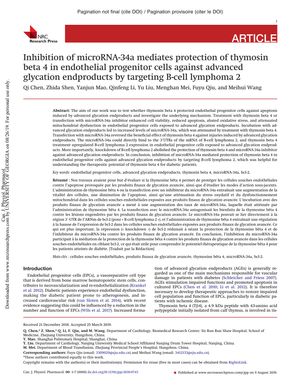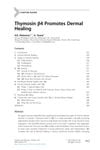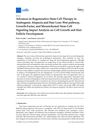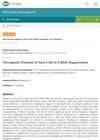The Compatibility of Bacillus Thuringiensis Cry Protein-Solubilizing Buffers with the Droplet Feeding Method in Fall Armyworm Larvae
August 2019
in “
Journal of Invertebrate Pathology
”

TLDR Thymosin beta 4 protects cells from damage by blocking a harmful microRNA and boosting a protective gene.
The study investigated the protective effects of thymosin beta 4 (TB4) on endothelial progenitor cells (EPCs) against damage from advanced glycation endproducts (AGEs), which are known to induce apoptosis. The researchers discovered that TB4 treatment improved cell viability, reduced apoptosis, decreased oxidative stress, and enhanced mitochondrial function in EPCs exposed to AGEs. They also found that AGEs increased the levels of microRNA-34a (miR-34a), which was decreased by TB4 treatment. TB4's protective effects were reversed when miR-34a was transfected into the cells. Further, miR-34a was shown to bind directly to the 3' untranslated regions (3'UTRs) of B-cell lymphoma 2 (bcl-2) mRNA, and TB4 treatment resulted in upregulated bcl-2 expression in EPCs exposed to AGEs. Knocking down bcl-2 expression negated the protective effects of TB4 and the miR-34a inhibitor. The study concluded that TB4 protects EPCs from AGE-induced damage by inhibiting miR-34a, which targets bcl-2, indicating that TB4 may have therapeutic potential for diabetic patients.



